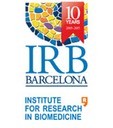status code
 The study, published in The Journal of Cell Biology, focuses on the development of the sperm tail, the structure that enables sperm cells to swim and is therefore critical for male fertility.
The study, published in The Journal of Cell Biology, focuses on the development of the sperm tail, the structure that enables sperm cells to swim and is therefore critical for male fertility.
In flies, as in humans, the sperm cell (spermatozoon) is made of the cell body proper, which is also referred to as the sperm “head”, and the flagellum. The flagellum, also known as the sperm “tail”, is a slender lash-like appendage that protrudes from the cell body. It is by beating their tails that sperm cells can swim to reach and fertilise the female reproductive cell (oocyte). A bundle of microtubules that span the entire length of the tail is critical for flagellar beating. These microtubules are arranged in a characteristic radial symmetry that is conserved through evolution and is templated by a small organelle that sits at the base of the flagellum, known as basal body.
Using the vinegar fly Drosophila melanogaster as an animal model to investigate how the sperm tail develops we found that CENTROBIN plays a critical role in the assembly of a subset of microtubules within basal bodies. In the absence of CENTROBIN, basal bodies lack these microtubules and so do the tails that they template that are not motile. Consequently, CENTROBIN mutant males are sterile.
In addition to the faulty microtubule array within the tail, the head-to-tail link is often severed in CENTROBIN mutant sperm. This effect is closely reminiscent of a human male sterility condition known as the “easily decapitated spermatozoa defect’. Semen from individuals affected by this condition appears normal, but minimal micro-manipulation such as that required for in vitro fertilisation results in sperm heads that are separated from their tails and, indeed, cannot swim.
Thus, in summary, this article demonstrates that CENTROBIN, which is well conserved between humans and flies, functions as a positive regulator of normal flagellum development. Remarkably, a previous study from the same research group showed that CENTROBIN exerts a negative effect in the development of primary cilia. Primary cilia are a shorter version of flagella that are present in certain neurons in the fly and in many cell types in humans where they function as sensors of external stimuli. Like flagella, primary cilia contain a microtubule array that is templated by the basal body. Altogether, these results reveal the multifunctional nature of CENTROBIN that plays somewhat opposite roles in different cell types in the same organism.
